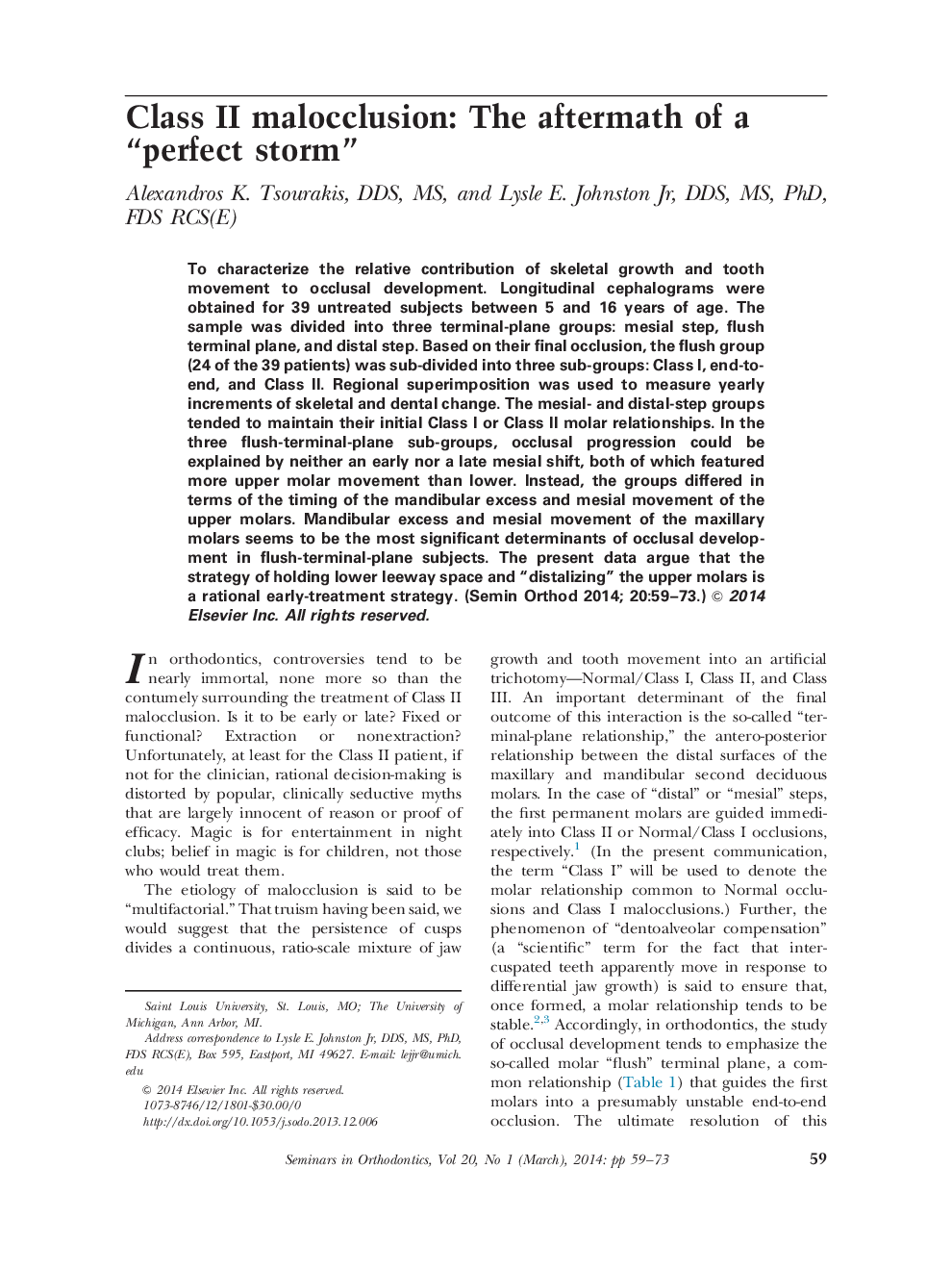| کد مقاله | کد نشریه | سال انتشار | مقاله انگلیسی | نسخه تمام متن |
|---|---|---|---|---|
| 3175467 | 1200146 | 2014 | 15 صفحه PDF | دانلود رایگان |

To characterize the relative contribution of skeletal growth and tooth movement to occlusal development. Longitudinal cephalograms were obtained for 39 untreated subjects between 5 and 16 years of age. The sample was divided into three terminal-plane groups: mesial step, flush terminal plane, and distal step. Based on their final occlusion, the flush group (24 of the 39 patients) was sub-divided into three sub-groups: Class I, end-to-end, and Class II. Regional superimposition was used to measure yearly increments of skeletal and dental change. The mesial- and distal-step groups tended to maintain their initial Class I or Class II molar relationships. In the three flush-terminal-plane sub-groups, occlusal progression could be explained by neither an early nor a late mesial shift, both of which featured more upper molar movement than lower. Instead, the groups differed in terms of the timing of the mandibular excess and mesial movement of the upper molars. Mandibular excess and mesial movement of the maxillary molars seems to be the most significant determinants of occlusal development in flush-terminal-plane subjects. The present data argue that the strategy of holding lower leeway space and “distalizing” the upper molars is a rational early-treatment strategy.
Journal: Seminars in Orthodontics - Volume 20, Issue 1, March 2014, Pages 59–73